Welcome to Fake Spring, a time of high anxiety for gardeners all across Australia. We’ve spent the winter consuming seed catalogues like porn, stalking garden centres like pervs, and now we are jonesing for one thing: ten-degree soil.
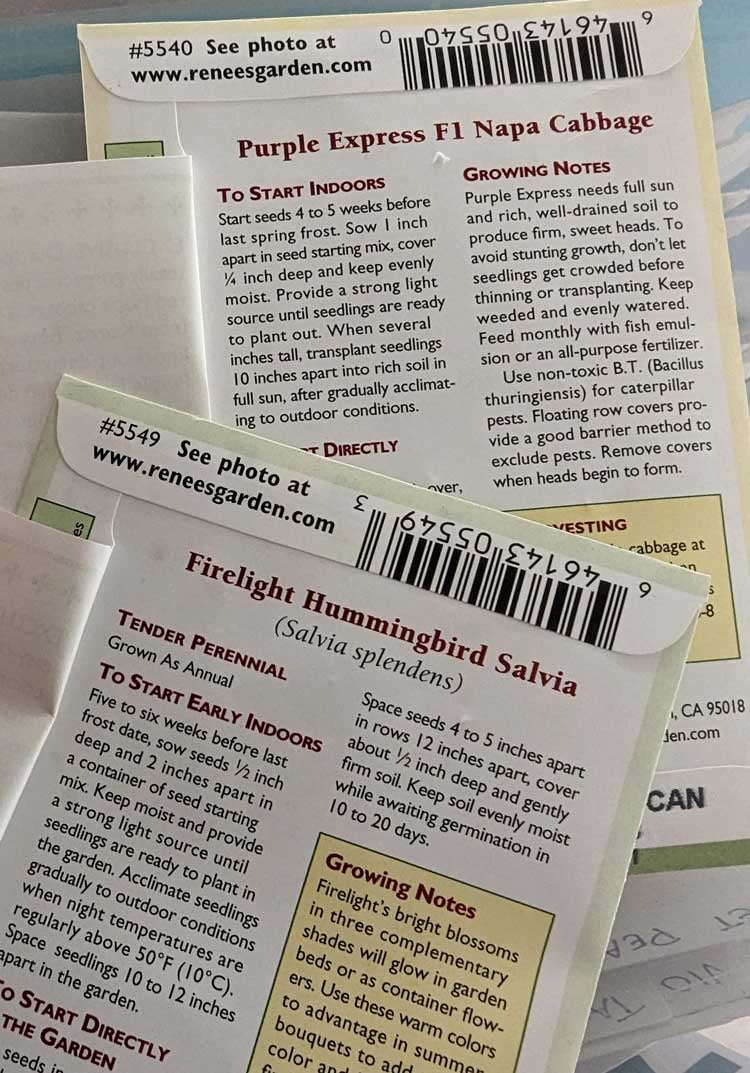
If you’ve ever checked the back of a seed packet, they all contain one phrase: “before last frost.” Plant six weeks before last frost, direct seed outside after last frost, start inside 12 weeks before last frost. It makes you think last frost is like Tax Day, a set calendar event. But it’s not, and that, friends, is the bane of existence for every gardener out there.
Gardening is a gambler’s game, because we have to hedge bets in August, trying to decide when to plant those seeds with little clue of when spring will break. This year, it’s late, almost everywhere. A late spring is a problem, because plants continue to grow in the greenhouses and there’s just not enough room for them. They are college graduates hanging around too long in the roost; they gotta go somewhere. I come to you with 400 flower seedlings at my feet in my living room with no other place to go. They’re certainly not going outside; I learned my lesson last year when I went to check on the seedlings I’d left outside for the first time and saw a blanket of snow on April 14 that had arrived with no warning.
How to know when it’s time for plants to go outside
Most of the vegetables and flowers we associate with summer — tomatoes, peppers, eggplants, squash, cucumbers, etc. — are tender. They require heat to germinate and to grow. They cannot survive a frost. The seeds won’t even germinate at under 10 degrees, and they really need 20 to germinate in any reasonable amount of time. For seedlings to survive outside, we’re looking for consistent soil temps in the sixties.
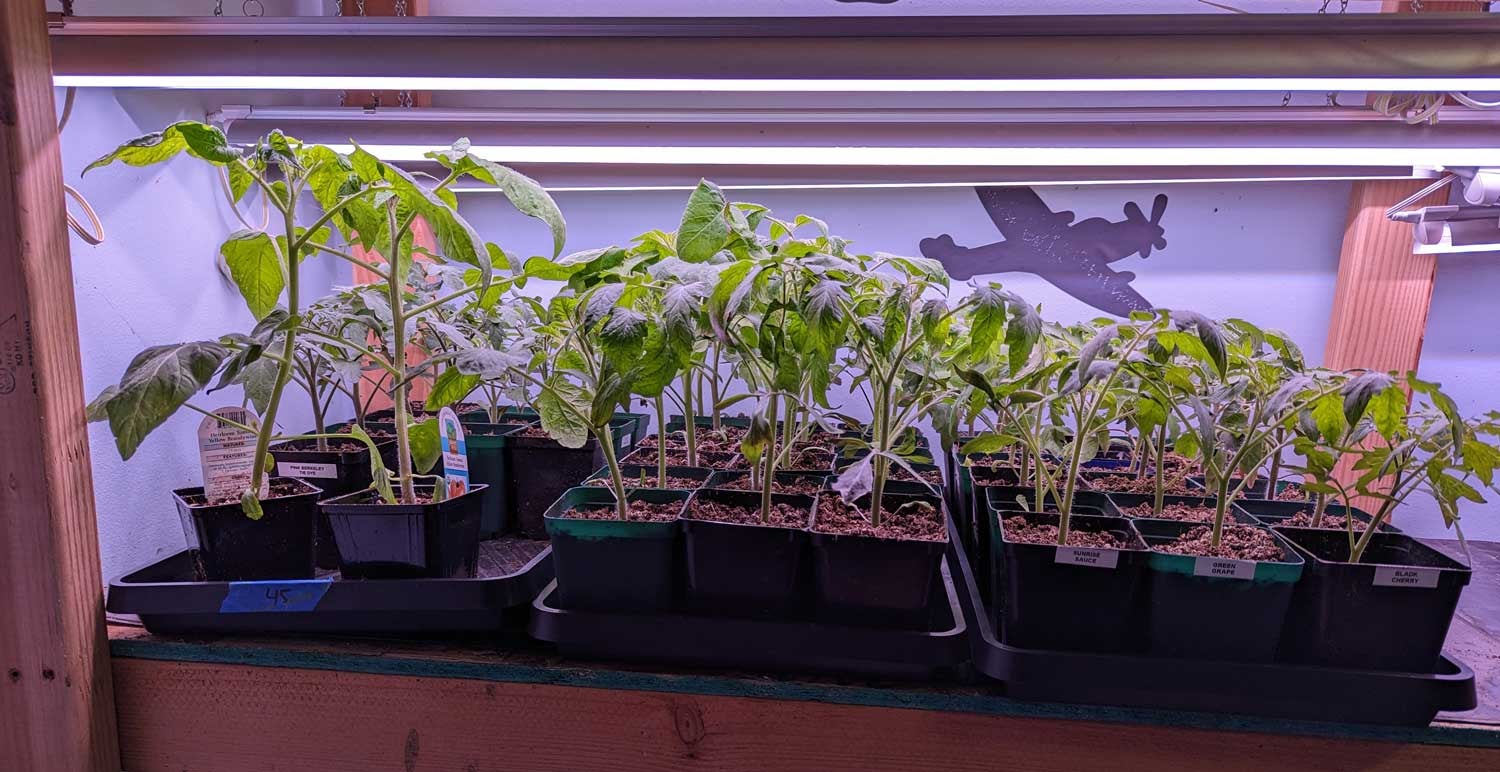
A soil thermometer is the way to go. While your local gardening group will be abuzz with the news regardless, its good to know your own yard. Different areas of your yard will be ready at different times. Make sure you’re testing at least eight inches deep in your soil. When you’ve got at least a week of 60 degree soil temps, you’re likely safe to plant those seedlings in the ground.
How to extend the greenhouse season if you need to
Your living room floor isn’t ideal. Plants need heat and light and water to thrive. If you’ve run out of room inside, it’s time for more greenhouse space, and the easiest way is a popup greenhouse. I prefer the kind that run low to the ground, because the tall, cheap models don’t do well in wind or at keeping the cold out. Couple this popup with some agribon, and you’re going to keep your seedlings cosy outside until you can start to harden them off.
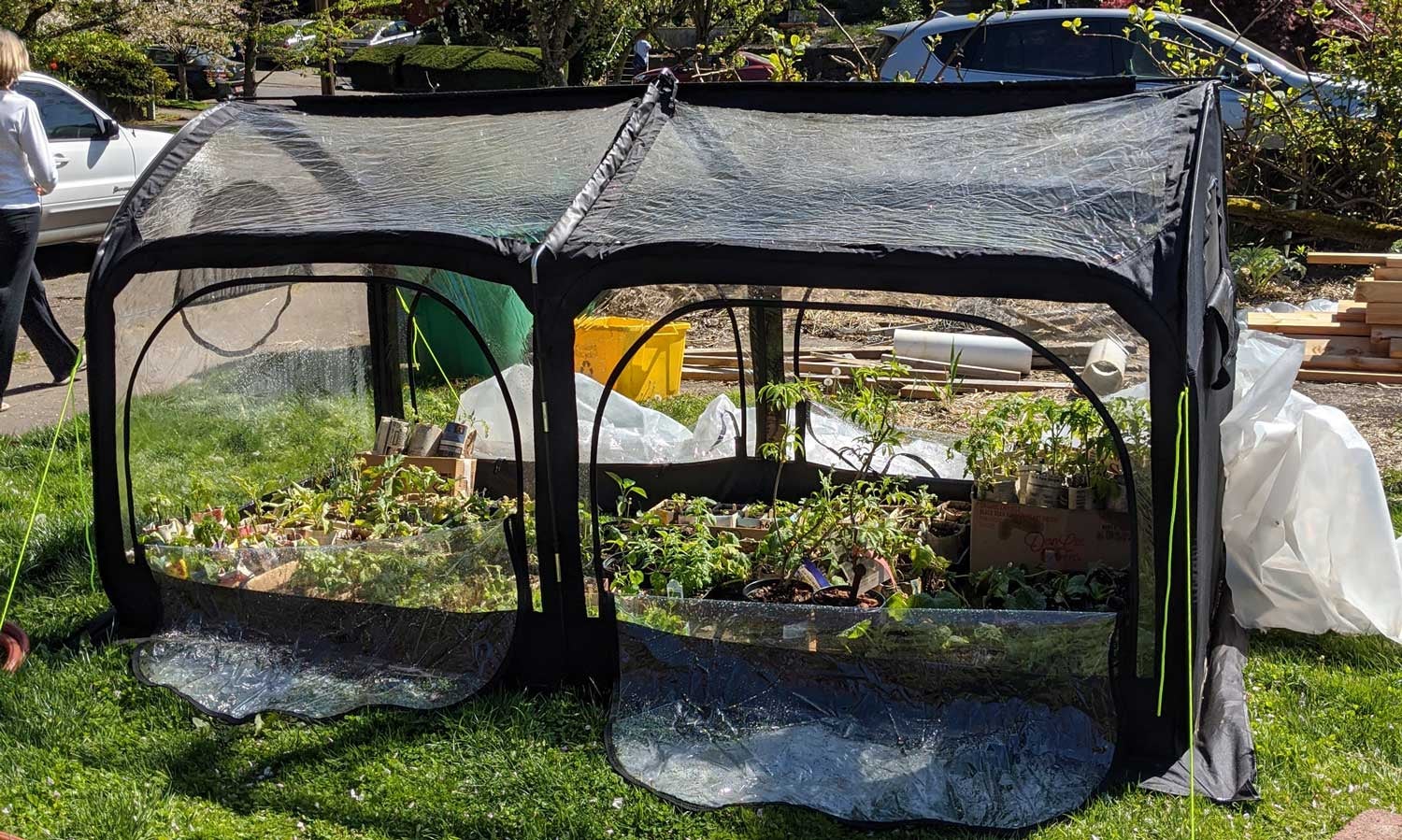
I add a few layers of agribon or row cover to the top of the greenhouse, and then a sheet of plastic (painters’ plastic is fine). It acts like a blanket, and depending on the agribon rating and how many layers you use, it can really keep the cold out.
How to harden off your plants
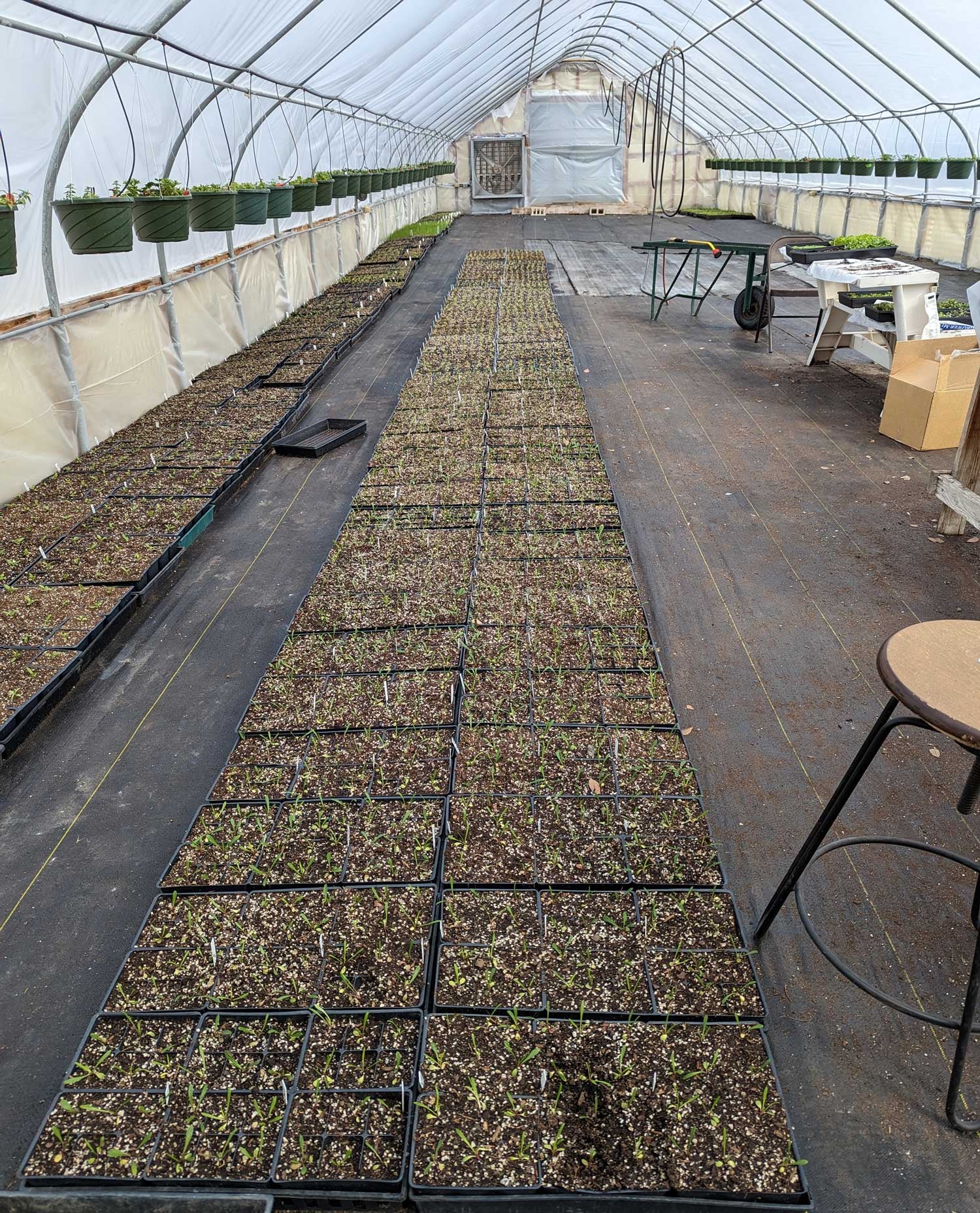
Your plant babies have grown up in an incubator — a cosy heated mat under them and warm lights overhead in a hot, humid greenhouse with consistent water. Even with sixty degree soil, the outside is going to be a brutal wakeup call to these Goldilock babies, and as a result, your plants can go into shock and become stunted, get diseased easier, or just die. We need to make that transition softer. That process is called “hardening off,” in which we slowly start introducing your plants to the hard cruelties of the real world over the course of a week or so.
Even in the cocoon of safety that is your greenhouse or grow environment, you can prepare your plants for the outside by ensuring the stems are strong. Use fans to lightly circulate air in the greenhouse to promotes stem strength. Run your hands over the seedlings often — it’s good for both of you — and tells the seedlings to get some core strength. Water consistently, but only as much as needed: The most common problem is overwatering. Bottom watering, which is just giving the seedlings a little water in your bottom tray, is ideal. We want the seedlings to be as independent as possible. Give the seedlings as much light as you can, as close as you can to the leaves, so they don’t become leggy.
Now, if you bought plants from the garden centre, chances are they’ve been hardened off for you. But if the garden centre is still keeping them in a greenhouse or covering them at night, you’ll need to do it.
Day 1: Field trip
Take your seedling trays outside and put them into a shaded space in the middle of the day for a few hours. The shade is really important, because the break from the sun gives the plants a chance to recover from the shock. They’re not really for a zillion kilowatts just yet. Take them out, give them some time to chill in a protected shady space, and then bring them back inside, and remind them to enjoy these last days.
Day 2: Introduction to the big ball of fire
Today, place your seeds someplace outside where they’ll get some sunlight, but not a direct hit, for a few hours. They’re still not ready for primetime, but they need more exposure than yesterday. Then they come back inside for their nightly tuck in.
Day 3: Here comes the sun
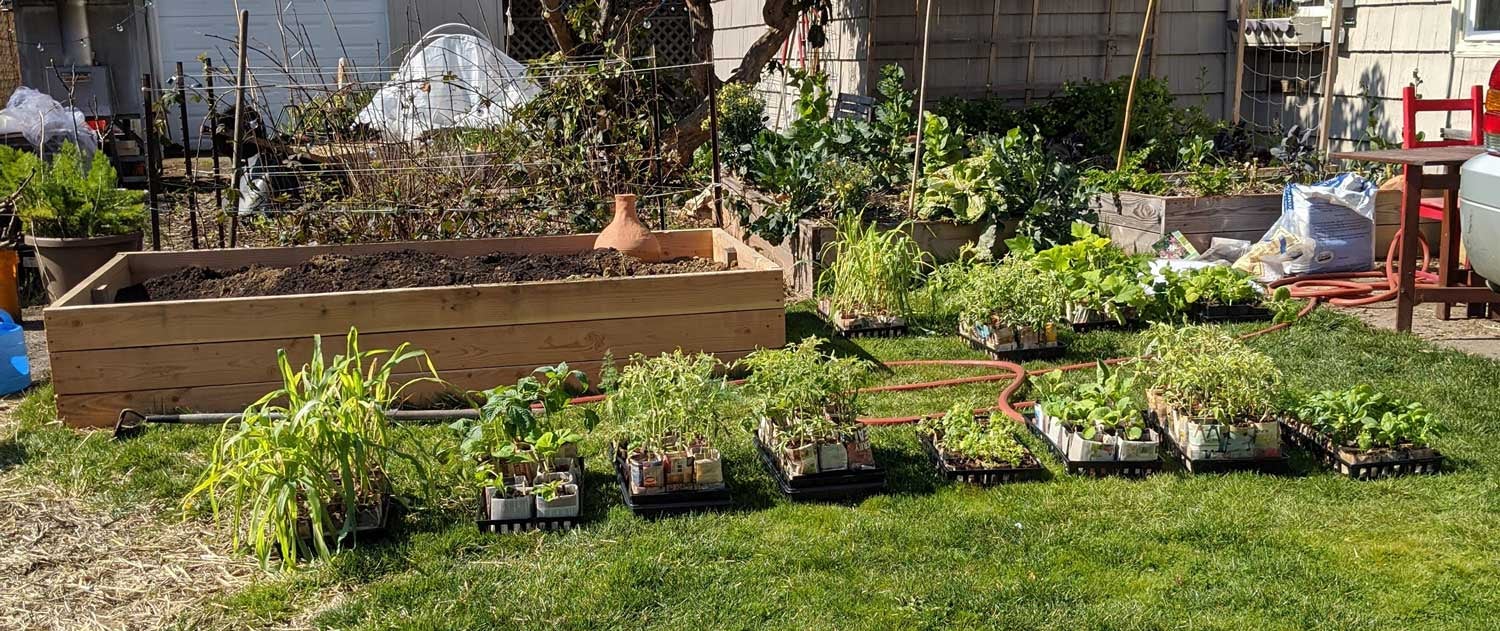
Today’s the day! We’re going full sun, baby, for a few hours. Make sure your seedlings are hydrated before they go out, but the sunhat is coming off; it’s time to get some Vitamin D. After three to four hours, bring them back in.
Day 4: Suns out, buds out
Back out they go, and into the full exposure; today, let’s leave them out for five to six hours before bringing them back in.
Day 5: School’s out for summer
It’s the first full day off from the nursery, so take your seedlings out first thing and don’t bring them back in until the sun goes down. Tuck them in for the last time, read them a bedtime story about the Little Tomato That Could, and say goodnight.
Day 6: Heigh ho, heigh ho…
Take one last pic with your babies because this morning, they’re being pushed out of the nest. Take them back outside, check on them at sunset, and then leave them outside overnight. Nighttime is when the critters roam around your garden, whether it be slugs, rabbits, squirrels or voles, so elevate them if you can.
Day 7: Independence day
It’s all going down today, as you plant your babies in the ground. Ideally, you’ll plant them in the late afternoon, so they can recover from the trauma without the sun blazing overhead. Planting in the morning or height of the day means they’ll be in full sun when they’re most stressed, which isn’t ideal.
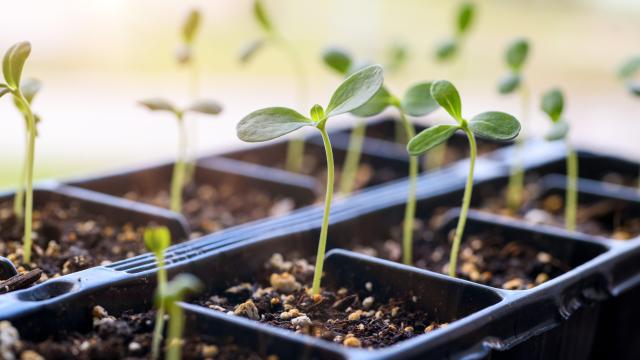
Leave a Reply
You must be logged in to post a comment.